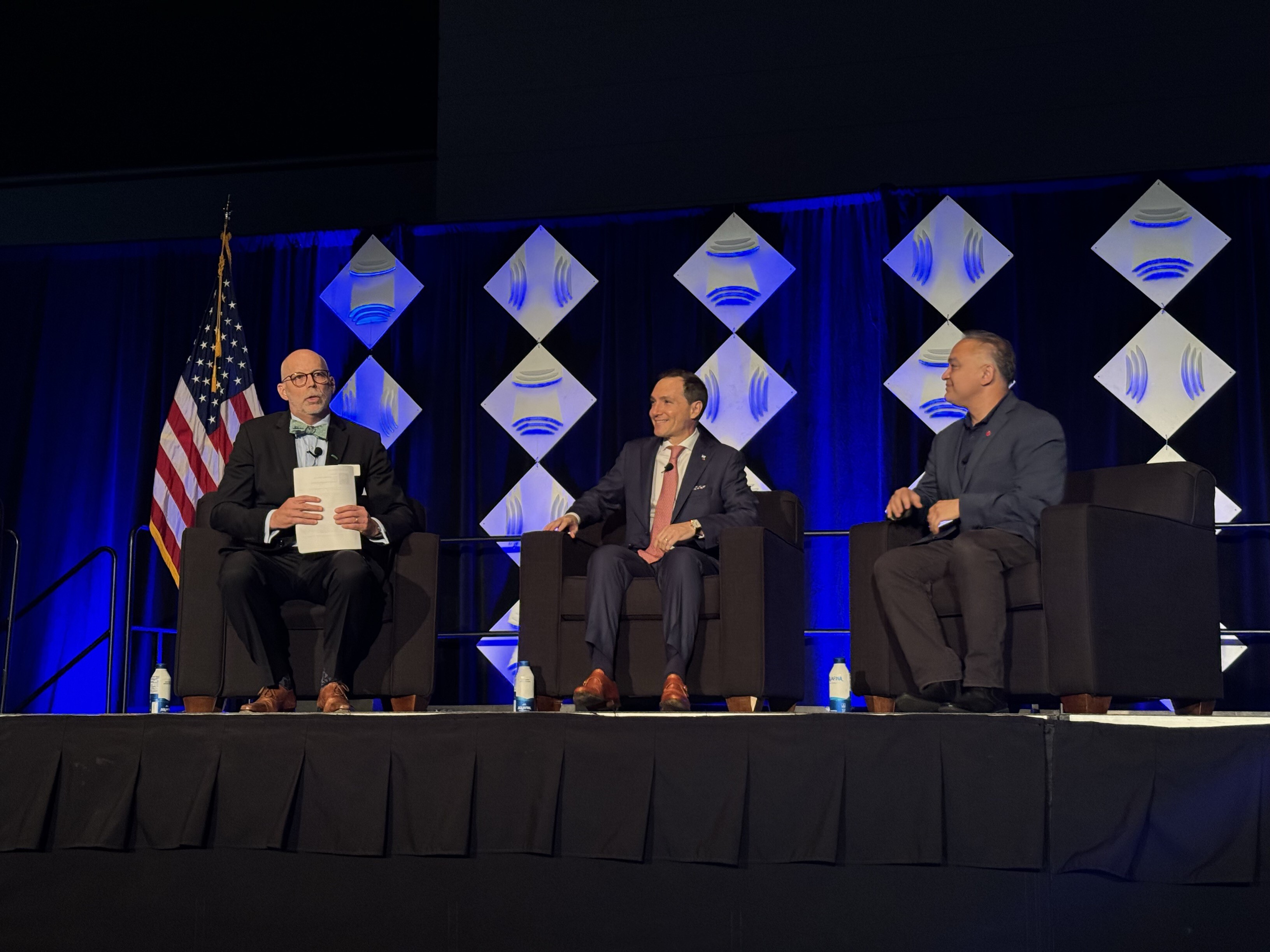Digging Deeper for Water … Literally — World Water Day 2022
NSF’s global water leaders discuss groundwater in different regions of the world, including its usage and NSF’s role in making it safe to drink.

World Water Day is celebrated annually as a United Nations observance, with a goal of water and sanitation for all by 2030. This year’s theme is “Groundwater — Making the Invisible Visible,” which is fitting given that we are relying more heavily on groundwater to help us adapt to climate change. This brings us to a crossroads as our planet’s groundwater is under threat from overuse and pollution. NSF’s leaders across the globe have weighed in on this important topic to provide us with insight and education on how various parts of the world use groundwater.
Reduce, Reuse, Recycle
Universally, each region of the world is facing the same challenge — greater demand for a limited water supply. According to the United Nations Department of Economic and Social Affairs (UNDESA), sub-Saharan Africa is a region that significantly battles water scarcity, with 300 of its 800 million people having access to less than 1,000 cubic meters per capita per year. Because of our warmer climate, countries around the world are having to quickly adapt to continue to supply water in their areas.
Groundwater becomes a limited resource if we use it faster than it can be replenished. To combat this, some countries, like the United Arab Emirates, are working to replenish underground reservoirs to help keep ecosystems alive. Additionally, an important consideration is to not only decrease our water usage, but also to recycle our water. On-site water systems are a great example of this, with buildings able to collect, treat and recycle water back through the building and landscaped areas. These types of innovations will be seen more frequently as countries move toward increasing sustainability.
Latin America is another one of many regions facing an imbalance of water supply, with some rivers overflowing while others are drying up. According to Yahoo News, extreme weather events have tripled since the 1980s, affecting our potable water due to contaminants that enter the water supply during these events. This has led regions like Latin America and the Southwestern United States, among others, to focus heavily on water reuse to provide drinking water more evenly.
“Water reuse is becoming imperative as a tool for us to adapt to reduced water supply due to climate change,” states Marcos Bensoussan, NSF’s Senior Manager of Water in Latin America. “Water reuse is our industry’s equivalent of electric cars for the automotive industry. It’s the wave of the future.”
Protecting the Life Source Beneath Us
North America is facing challenges utilizing the groundwater supply for drinking water because of PFAS (perfluoroalkyl substances, also known as forever chemicals) contamination in some groundwater wells. These chemicals can come from firefighting foams, waterproofing compounds, nonstick coatings and other applications of these polyfluorinated compounds. The ramifications of a contaminated groundwater supply have proven the importance of protecting this precious water source. States like Michigan support source water and watershed protection programs in sensitive areas with high population density and/or heavy industrial activity. Additionally, septic tanks and systems must be properly permitted, installed and maintained to help control aquifer contamination. Agricultural and farm runoff, which are often laden with excessive nutrients and bacteria are also appropriately controlled to minimize groundwater contamination.
“It is encouraging to see action from these states and government bodies to protect our groundwater,” says Dave Purkiss, Vice President of NSF’s Global Water Division. “Because it is stored in aquifers underground, there are many avenues through which contaminants can seep into it, including certain agricultural practices, septic tanks and systems, and improper disposal of chemicals. We all have a responsibility to work together and prevent that from happening.”
Making the “Invisible” Safe
The safety and widespread usage of groundwater differ across the globe. In Latin America, groundwater wells are subject to severe water contamination, making drinking straight from the well extremely dangerous. In the EMEA region, the ability to access groundwater is not consistent, with some countries having greater potential to utilize it than others. However, in other places, like Asia, groundwater is the main source of domestic water and is used for industrial, commercial and residential purposes. Due to this usage, it is treated at water plants through precipitation, disinfection and filtration methods before being transported to each user through water distribution pump stations.
On the other side of the world, public water suppliers in Michigan provide groundwater to 1.7 million people, and an additional 2.6 million Michigan residents use private groundwater wells. The state’s water is regulated by the Michigan Department of Environment, Great Lakes and Energy (EGLE), which also investigates water well contamination.
“If you’re ever in doubt on whether your water has been treated and is safe, using a certified water filter, purifier or system is a fantastic way to add an additional layer of protection for you and your family,” states Dr. John Shan, Senior Director of NSF’s China Water Division.
Individuals should research what contaminants to look for in their area to understand which certified filter they need to remove those contaminants. If using a filter is not a viable option, be sure to boil your water thoroughly before consuming it.
NSF’s Role in Global Water Safety
Though desalination, reverse osmosis, small treatment units and atmospheric generators (water harvesting) have emerged as new and innovative ways to convert and filter water for consumption, groundwater is currently the more cost-effective way to access drinking water. NSF helps with groundwater safety, working in 180 different countries across the globe to achieve our mission of protecting and improving global human health through safe water solutions. Included in this work are our partnerships with government bodies adopting NSF standards or protocols and relying on NSF’s robust schemes to provide a safe environment for consumers in their countries. We achieved this recently with Brazil adopting NSF 61 and ABNT NBR 15784 (a standard for chemicals based on NSF 60) into their legislation. This means manufacturers wanting to sell water treatment chemical products there need to be compliant with the standard through testing, which increases water safety.
Additionally, NSF has certified point-of-use drinking water treatment devices that have been evaluated to reduce the concentration of two specific PFAS substances — perfluorooctanoic acid (PFOA) and perfluorooctane sulfonate (PFOS) — in drinking water to below 70 parts per trillion, to address the groundwater contamination in places like Michigan. NSF/ANSI 53 and NSF/ANSI 58 set criteria to evaluate these devices, and the NSF Joint Committee that oversees this standard has a task group considering expanding the requirements to cover additional PFAS compounds.
The Evolution of the Water Industry
The water industry is constantly evolving, which requires continuous innovation and adaptation to maintain a high level of safety. In alignment with NSF’s mission, standards and protocols have evolved over the years to serve new requirements, in terms of both technological advancements and the emergence of contaminants that are potentially hazardous to human health. NSF’s efforts have increased water safety across the world, making it possible to have safer products, materials, water treatment, storage and distribution of water for human consumption.
“NSF works very closely with water industry partners, which creates opportunities for us to better understand and partner on future innovations,” says Christian Kurdy, Director of NSF’s EMEA Water Division. “We have several standards to cater to drinking water products and materials in terms of both performance and health issues, but our teams are also constantly working on matching health and performance with innovation.”
Contact us with questions or to receive a quote.
Sources:
United Nations Department of Economic and Social Affairs (UNDESA). (2014. May 16). Water for Life Decade Africa. Retrieved from: www.un.org/waterforlifedecade/africa.shtml#:~:text=About%2066%25%20of%20Africa%20is,poor%20hygiene%20and%20contaminated%20water
Adler, Ben. (2022. February 3). Climate change is causing 'super-extreme' weather events, scientists say. Retrieved from: news.yahoo.com/climate-change-is-causing-super-extreme-weather-events-scientists-say-202314606.html" class="redactor-autoparser-object
How NSF Can Help You
Get in touch to find out how we can help you and your business thrive.

What’s New with NSF

NSF Shanghai Named Critical Site for NSF/ANSI 455 and NSF/ANSI 173 by ANSI National Accreditation Board
July 26, 2024
NSF Takes Center Stage at NEHA Annual Education Conference
July 25, 2024
NSF Asia Pacific Showcases Hospitality Solutions at THAIFEX HOREC Asia 2024 in Bangkok, Thailand
July 4, 2024